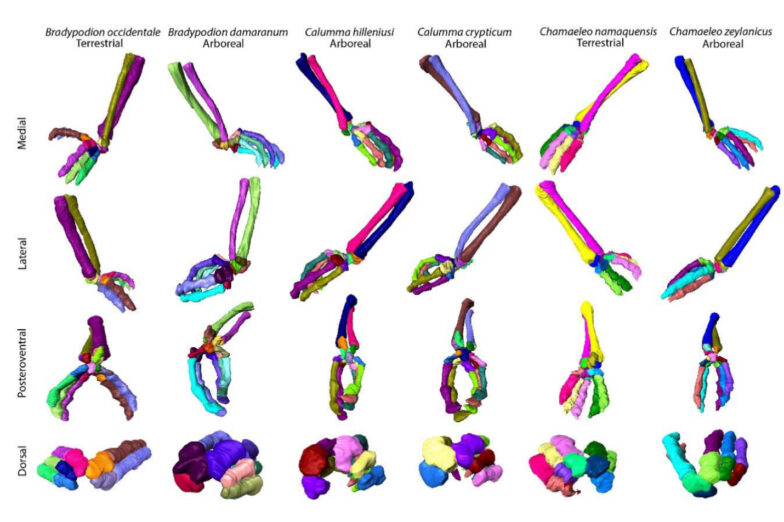Some interesting observations were recently made in central eastern Madagascar. Two snakes of the species Compsophis infralineatus were observed trying to devour chameleons as prey. Overall, not much is known about these snakes, but they were long thought to be primarily frog and egg eaters. An observation from 2018 already reports an attempt by another Compsophis species to eat a chameleon, which was regurgitated.
The current observations were made in the private rainforest of Vallombre Natiora near Mandraka. During night walks, an adult Compsophis infralineatus was discovered eating an adult Calumma gastrotaenia. The entire process of consumption was not observed, the snake had disappeared on return to the site, as had the chameleon. The authors assume that the chameleon was successfully devoured. On the same night, another snake of the same species was seen attempting to eat an adult Calumma crypticum. The chameleon was still alive and tried to free itself from the snake’s coils, but seemed unsuccessful first. Later, the same snake was seen again, hanging with its mouth in the back of the chameleon, which was apparently still alive but no with the snake wrapped around it. In the photo, it appears that the chameleon is still alive.
Predation on the chameleons Calummy crypticum Raxworthy and Nussbaum, 2006 and C. gastrotaenia (Boulenger, 1888) by the snake Compsophis infralineatus (Günther 1882) near Mandaka, Madagascar
Devin A. Edmonds and Samina S. Sam-Edmonds
Herpetology Notes (17), 2024: pp. 327-328
DOI: not available
Picture: from the above-mentioned publication, CC BY-NC-ND 4.0



